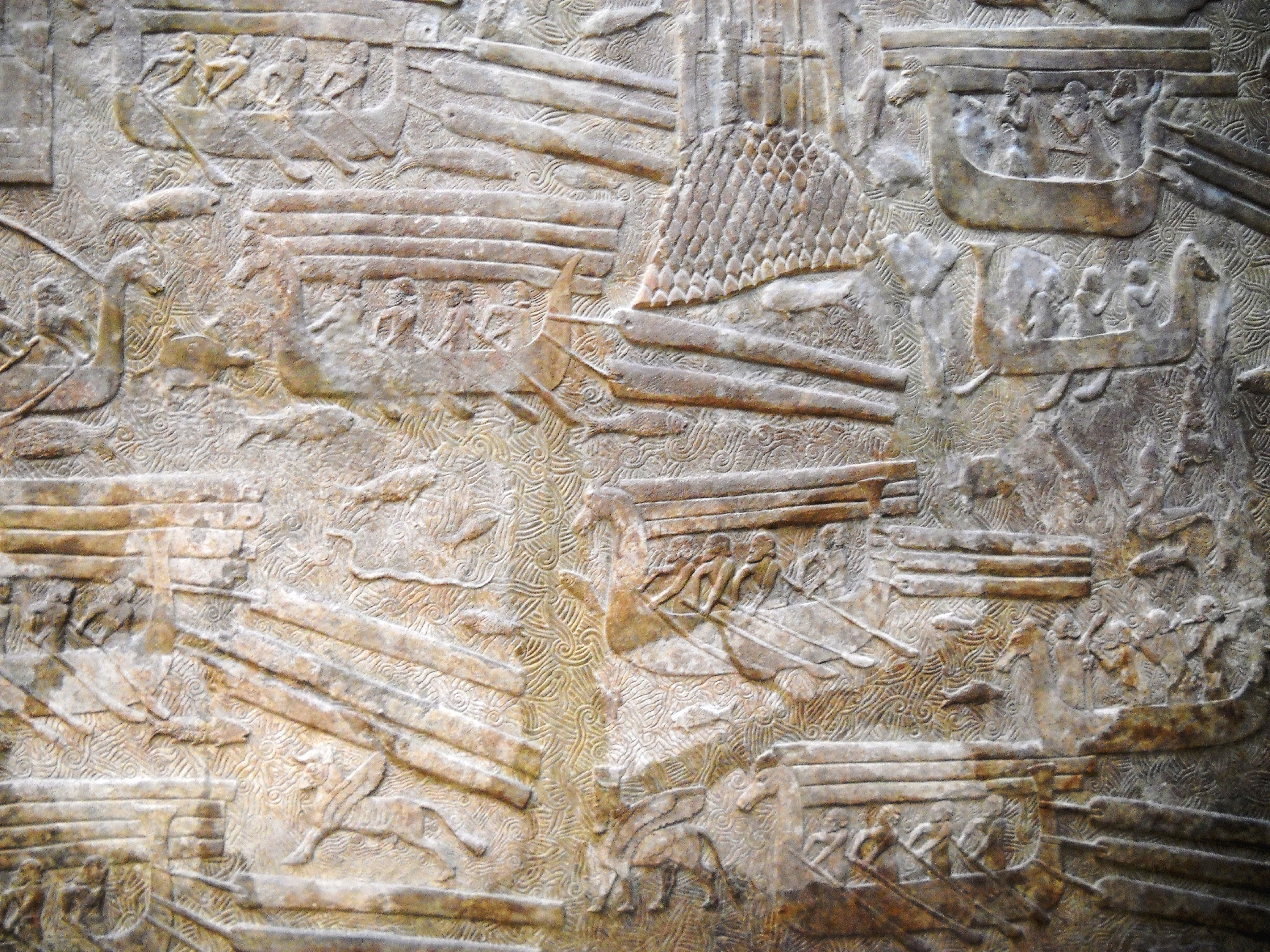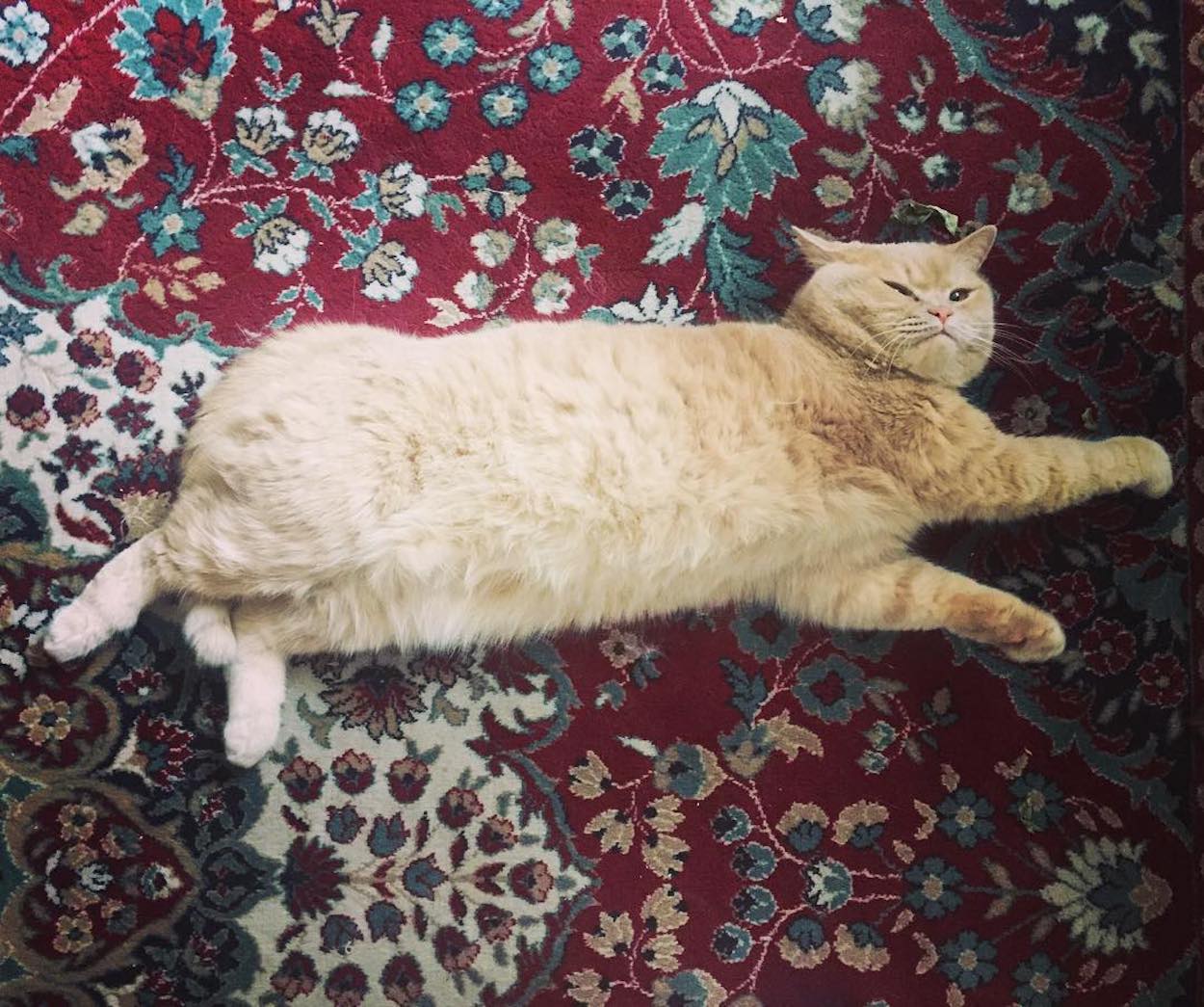Between 717 and 706 BCE, King Sargon II built his new palace in Khorsabad, in what is now Iraq. As in every Assyrian palace, sculpture was very important. Friezes and reliefs show diplomatic relationships and political matters.
Placed in the ceremonial courtyard onto which the throne room opened, this scene symbolized the Assyrian king's domination extending from Persia to Cyprus. People under Assyrian rule had to pay tribute to the emperor, which for the people of Lebanon was cedar wood shipments. As we can see, cedar trunks were conveyed by boat, maybe though the Euphrates river. The Lebanese wood was famous for its quality and appreciated as a luxurious building material.
The perspective of this relief is not realistic, because everything has the same size, which is acceptable when covering entire walls with the same pattern. Because the king died in 705 BCE, these patterns were enjoyed by Sargon II less than one year. Upon his death on the battlefield his body was not recovered and the funeral could not take place in his capital, causing his palace to be cursed. In the following year people abandoned the city of Khorsabad for this reason.
The excavations of this palace were made by the French in the middle of the 19th century, which explains why an entire room in the museum of the Louvre in Paris is devoted to the reconstitution of Assyrian sculpture from Khorsabad.
- Coraline Méric
P.S. Meet Bihzad here; he was the Persian Leonardo!


 Unknown Artist
Unknown Artist